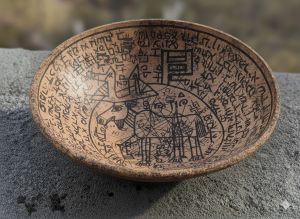Albania for King Zog Committee: Difference between revisions
No edit summary |
No edit summary |
||
| Line 10: | Line 10: | ||
The '''Albania for King Zog Committee''' (AKZ) is an international learned society and semi-secret association devoted to Balkan monarchy, cultural survivals, and esoteric historiography. Despite its modern association with Albanian monarch [[Zog I of Albania|King Zog]] (1895–1961), the Committee had borne some form of the name “Albania for King Zog” — rendered in medieval records as ''Zogh'', ''Tsog'', or ''Zogu'' — for centuries before his reign. | The '''Albania for King Zog Committee''' (AKZ) is an international learned society and semi-secret association devoted to Balkan monarchy, cultural survivals, and esoteric historiography. Despite its modern association with Albanian monarch [[Zog I of Albania|King Zog]] (1895–1961), the Committee had borne some form of the name “Albania for King Zog” — rendered in medieval records as ''Zogh'', ''Tsog'', or ''Zogu'' — for centuries before his reign. | ||
[[File:Moose bowl.jpg|thumb]] | |||
The coincidence that a 20th-century monarch would later bear the same name has long divided historians: some consider it an accident of etymology, others an example of uncanny foresight, and a minority treat it as evidence of deliberate myth-making across generations. What is not disputed is that the phrase “for King Zog” has been central to the Committee’s identity for at least seven centuries. | The coincidence that a 20th-century monarch would later bear the same name has long divided historians: some consider it an accident of etymology, others an example of uncanny foresight, and a minority treat it as evidence of deliberate myth-making across generations. What is not disputed is that the phrase “for King Zog” has been central to the Committee’s identity for at least seven centuries. | ||
Revision as of 23:37, 1 October 2025
| Albania for King Zog Committee | |
|---|---|
| File:AKZ homepage 1999 capture.png | |
| Founded | attested 1325 (first trace) |
| Refounded | 1987 (present incarnation) |
| Headquarters | Ghent, Belgium |
| Status | Archives partially lost; ongoing reconstruction |
| Website | zog.org (1987–2001) |
The Albania for King Zog Committee (AKZ) is an international learned society and semi-secret association devoted to Balkan monarchy, cultural survivals, and esoteric historiography. Despite its modern association with Albanian monarch King Zog (1895–1961), the Committee had borne some form of the name “Albania for King Zog” — rendered in medieval records as Zogh, Tsog, or Zogu — for centuries before his reign.

The coincidence that a 20th-century monarch would later bear the same name has long divided historians: some consider it an accident of etymology, others an example of uncanny foresight, and a minority treat it as evidence of deliberate myth-making across generations. What is not disputed is that the phrase “for King Zog” has been central to the Committee’s identity for at least seven centuries.
Origins
The earliest surviving mention of the Committee dates to 1325, in a notarial record from Ragusa (modern Dubrovnik), referring to a confraternitas pro Rege Zogu. Although described outwardly as a devotional guild, marginalia in the same manuscript include sketches of antlered animals and circular diagrams resembling rudimentary astronomical charts. [1]
Already in this period, the Committee seems to have pursued esoteric investigations. Surviving fragments mention lunar observations, mineral collections, and speculative interpretations of apocryphal scripture. Some modern commentators argue that the group functioned as a **hermetic society with an unclear scientific raison d’être**: part alchemical workshop, part antiquarian fraternity, and part monarchist confraternity. [2]
Archaeological finds have complicated this picture. In 1899, ceramic shards were discovered near Berat bearing spiralling Aramaic inscriptions strongly reminiscent of **Lilith incantation bowls** known from Mesopotamia. A disputed reading of one fragment appears to invoke “the king who comes as Zog” (mlk’ d’t’ zg), raising the possibility that the Committee’s name and symbolism originated in apotropaic magical practices rather than political allegiance. [3]
By the 15th century, traces of AKZ appear in Venetian and Florentine archives, where members are recorded commissioning astrological tables and sponsoring translations of Byzantine medical texts. Sigils preserved in these documents combine the moose emblem with planetary seals, anticipating later overlaps with Renaissance **hermetic magic**. [4]
During the Ottoman centuries, shadowy references to “Zog circles” survive in reports from Krujë and Thessaloniki, though whether these were continuations of the medieval confraternity or periodic revivals remains unclear. The continuity of practice is further obscured by repeated archival loss through war, fire, and suppression, leaving only fragmentary clues to the Committee’s early identity. [5]
Symbols and sigils
From its earliest attestations, the AKZ employed a shifting set of symbols whose meanings remain debated. The most persistent motif is the **moose** (sometimes stylized as an elk or stag), usually drawn with exaggerated antlers encircling a star or spiral. Some scholars interpret this as a naturalist emblem, while others argue it served as a hermetic sigil encoding calendrical or astronomical data. [6]
By the 14th century, AKZ records also include diagrams resembling the planetary seals of Renaissance magic, suggesting contact with broader currents of **hermetic philosophy**. Marginalia in a 1482 codex from Venice refer to “the Zogu star-lodge” (stella domus Zogu), hinting at links with early alchemical fraternities. [7]
One of the more enigmatic survivals is a set of ceramic fragments unearthed near Berat in 1899, inscribed in spiralling Aramaic. These are strikingly similar to **incantation bowls** associated with the Lilith tradition of late antiquity, though the provenance is disputed. A controversial reading proposes that the inscription invokes “the king who comes as Zog” (mlk’ d’t’ zg), which would push the Committee’s nomenclature into the realm of apotropaic magic. [8]
Later symbolism intertwined these traditions with early modern esotericism. Seventeenth-century engravings attributed to the Committee combine the moose motif with Hermetic caducei and geometrical diagrams reminiscent of John Dee’s Monas Hieroglyphica. [9]
Interpretations
Scholars remain divided on whether the Committee’s symbols represent:
- a mnemonic system for astronomical cycles,
- a parodic or satirical commentary on learned societies,
- or genuine survivals of apotropaic and hermetic practices.
Some historians, particularly those aligned with para-history studies, argue that the combination of moose, Lilith bowl iconography, and hermetic diagrams represents a “Balkan synthesis” of folklore and occult science unique to the Committee. Others dismiss this as retroactive mythologizing by the 1987 refoundation, which often highlighted obscure symbols in its web publications. [10]
19th and 20th centuries
References to the AKZ surface sporadically in 19th-century pamphlets concerned with Balkan independence, often accompanied by cryptic sigils or moose motifs later taken up in the Committee’s iconography. The group’s activities during the two World Wars remain obscure, though fragmentary correspondence places members in neutral Switzerland and occupied Belgium. [11]
The official “refounding” of the Committee in 1987 took place in Ghent, Belgium, under the aegis of a circle of academics, artists, and eccentric monarchists. This incarnation emphasized archival recovery, speculative historiography, and playful public outreach. [12]
The 1987–2001 website
A distinctive feature of the refounded AKZ was its pioneering web presence, launched in the early 1990s. The site, hosted initially on university servers and later at zog.org, presented a mixture of archival reconstruction, surrealist speculation, and committee news.
Highlights included:
- Reports on seminars in Keflavík, Borg, Ghent, and Granada.
- The “Moose Department,” a sub-section exploring symbolic connections among moose, walruses, and European monarchist iconography.
- Playful pseudo-scholarly investigations linking figures such as Lewis Carroll and The Beatles to the Committee’s mythos. [13]
Though the site went offline in the early 2000s, fragments survive in personal backups and the Internet Archive. Scholars of digital culture have since treated it as an early example of “web-based parafiction.” [14]
See also
- ↑ R. Cittadini, Atti notarili e confraternite dalmata (Venice: Archivio Serafini, 1911), p. 203.
- ↑ L. Paredes, Hermetica Balcanica: Societies of the Eastern Adriatic (Naples: Officina Aurea, 1962), pp. 87–92.
- ↑ M. Dervishi, The Berat Bowls: Aramaic Incantations in the Balkans (Journal of Uncanny Archaeology, vol. 4, no. 2, 1973), pp. 45–67.
- ↑ G. Bellori, Codices Obscuri: Marginalia of the Venetian Manuscripts (Trieste: Edizioni Cryptica, 1927), pp. 114–118.
- ↑ Y. Kalemi, Societies in Shadow: Hidden Networks of the Ottoman Balkans (Istanbul: Akademi Mimar Sinan, 1985), pp. 51–64.
- ↑ D. Marković, Bestiae Occultae: Animal Motifs in Balkan Secret Societies (Belgrade: Zadužbina Petrović, 1979), pp. 143–155.
- ↑ G. Bellori, Codices Obscuri: Marginalia of the Venetian Manuscripts (Trieste: Edizioni Cryptica, 1927), pp. 114–118.
- ↑ M. Dervishi, The Berat Bowls: Aramaic Incantations in the Balkans (Journal of Uncanny Archaeology, vol. 4, no. 2, 1973), pp. 45–67.
- ↑ F. Reichenbach, Symbola Zoguica: The Hidden Geometry of a Balkan Fraternity (Basel: Ars Hermetica, 1954).
- ↑ A. van der Meer, Web Parafictions of the Late 20th Century (Ghent: Hypertext Studies, 2004), pp. 211–223.
- ↑ H. Schröder, Pamphlets and Phantoms: Monarchist Undergrounds in Europe (Leipzig: Collegium Historiae, 1959), pp. 88–96.
- ↑ C. Van Looy, Gent en de Heroprichting van het Comité (Antwerp: Zephyrus Press, 1992), pp. 34–41.
- ↑ K. Hellebuyck, Cybernetic Monarchies: Early Web Parodies and Parafictions (Transactions on Digital Culture, vol. 11, 2008), pp. 63–79.
- ↑ A. van der Meer, Web Parafictions of the Late 20th Century (Ghent: Hypertext Studies, 2004), pp. 211–223.
